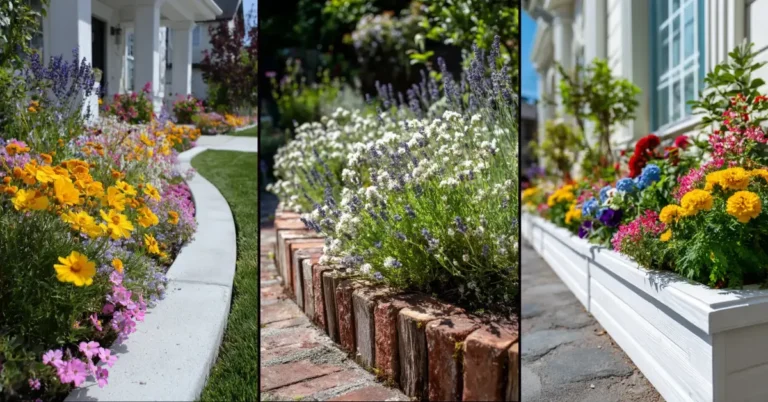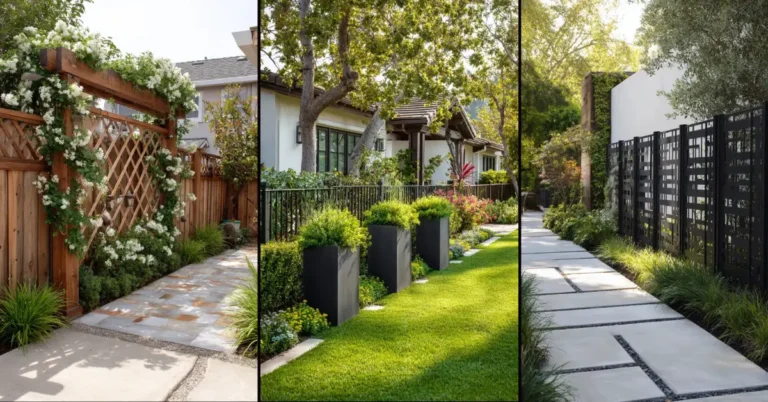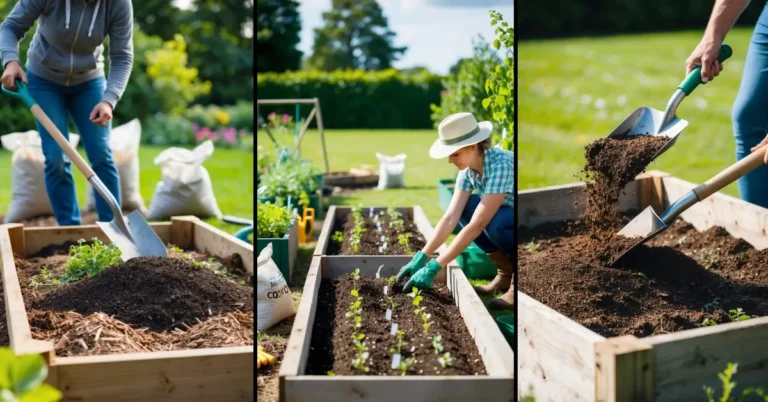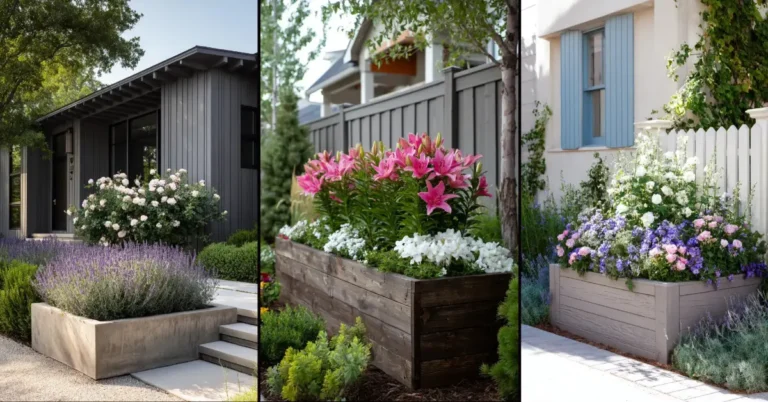10 Lawn Border Ideas: for Enhancing Garden Elegance
You don’t always notice a lawn border, until it’s done really well. That clean line between your grass and garden beds doesn’t just keep things tidy, it makes your whole yard look sharper, more intentional, and honestly, more cared for.
A few bricks, some stone, or even a strip of metal edging can completely change the way your landscape flows.
This list rounds up 10 lawn border ideas that are simple to pull off, full of charm, and designed to make your yard feel a little more finished.
1) Natural Rock Borders
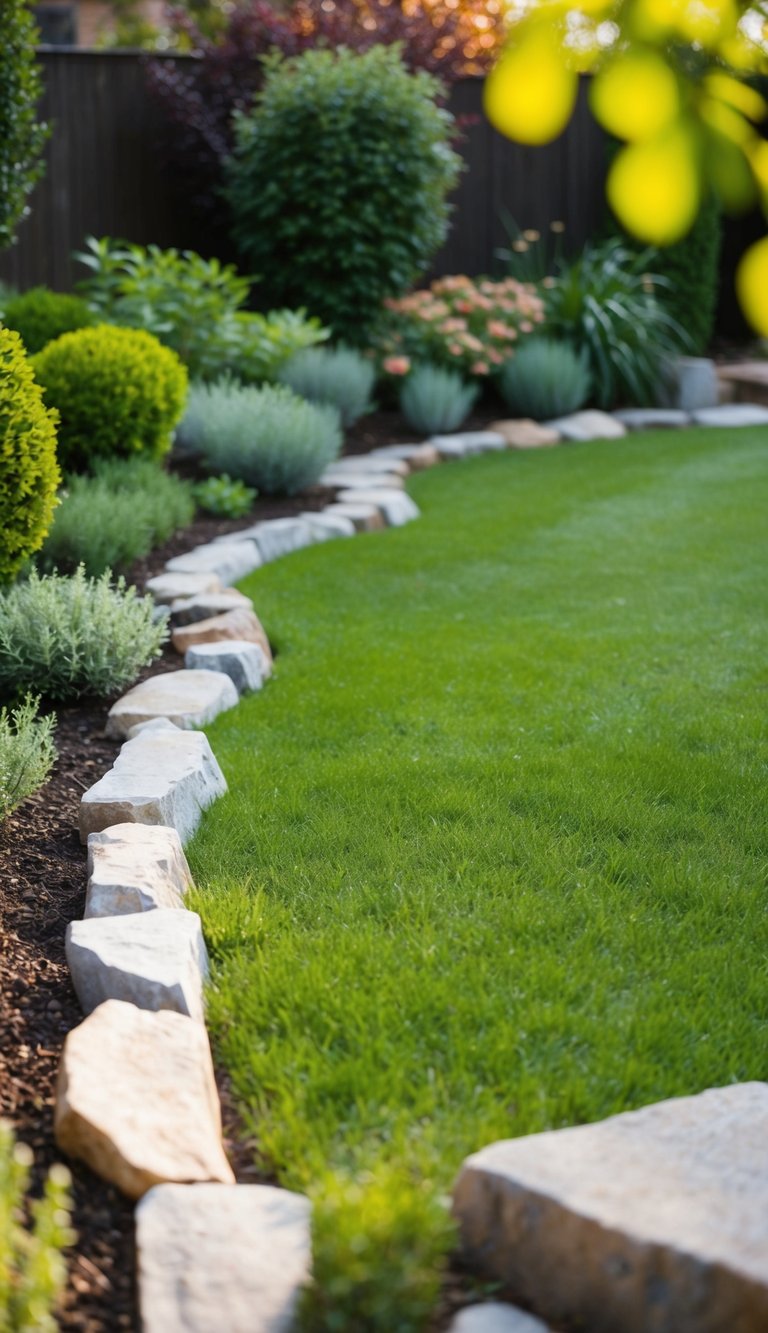
Natural rock borders are simple but sturdy. You can arrange them in straight or curved lines, depending on the garden’s shape.
To install, dig a trench about 8 inches deep and fill it with gravel and crushed stone before placing the rocks. This helps keep everything in place and looks pretty natural, honestly.
Learn more about rock garden edging ideas here.
2) Brick Edging
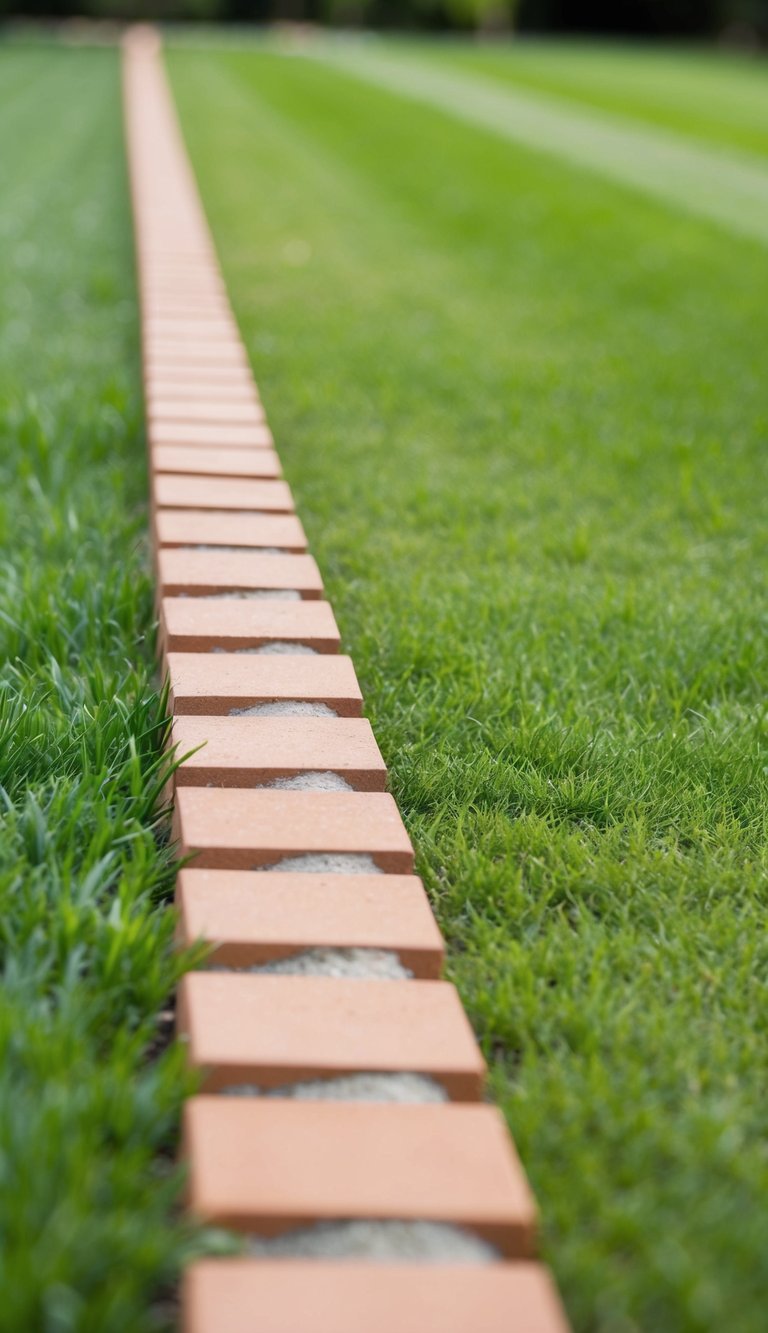
Brick edging gives lawns a classic, tidy look. It’s durable and does a great job of keeping grass where it belongs.
Clay pavers are easy to install and can be arranged in different patterns. That little touch of elegance is hard to beat.
If you’re searching for ideas, check out brick landscape edging designs for inspiration.
3) Terracotta Edging
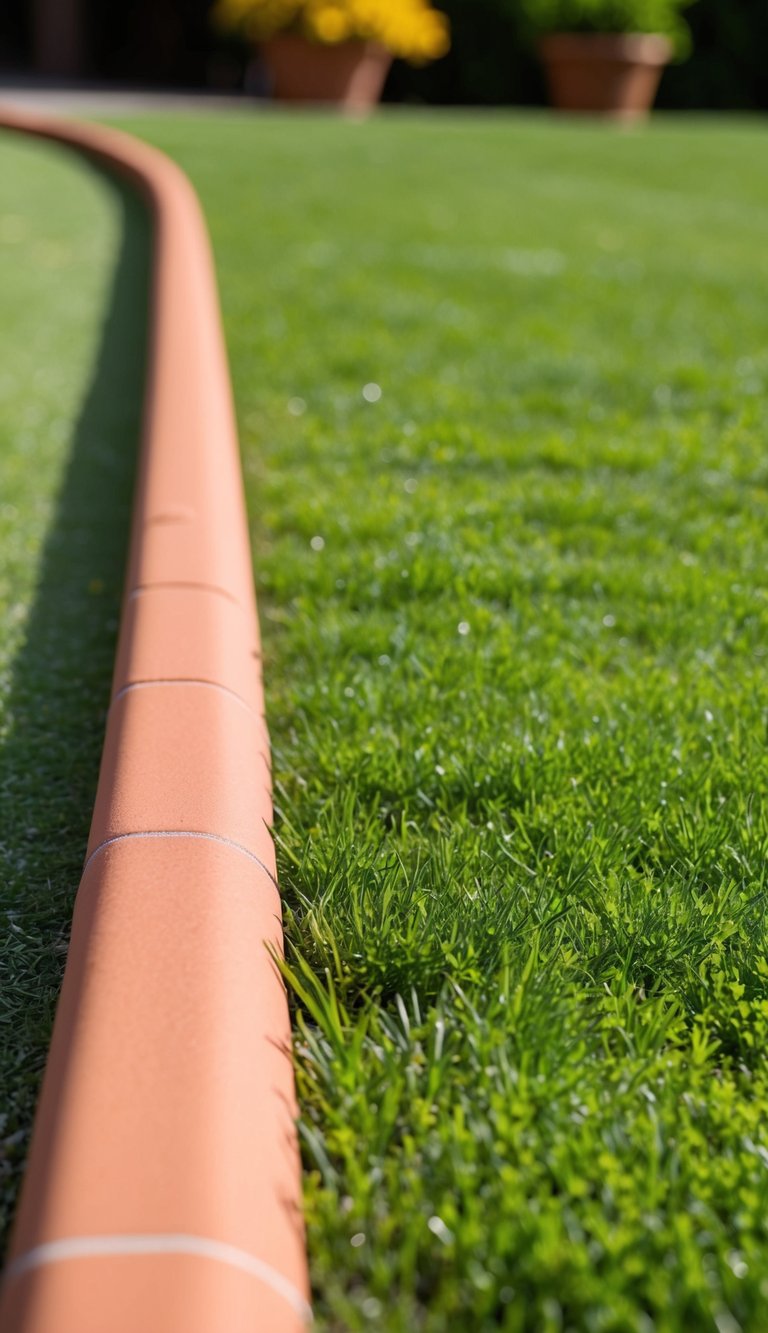
Terracotta edging brings a warm, classic vibe to gardens. It works for both straight and curved borders.
You can arrange the pieces however you like, and the earthy color blends right in with plants. There’s something inviting about it. More ideas can be found on terracotta garden edging.
4) Metal Landscape Edging

Metal edging looks clean and modern. It’s tough, too, holding up against weather and the occasional run-in with a lawn tool.
Galvanized steel is a popular pick since it resists rust and lasts for years. It’s flexible enough to handle curves or straight lines.
There are options like corrugated or flat strips if you want a specific look. For more, check out metal edging products and ideas at The Home Depot or Pinterest.
5) Plastic Lawn Edging
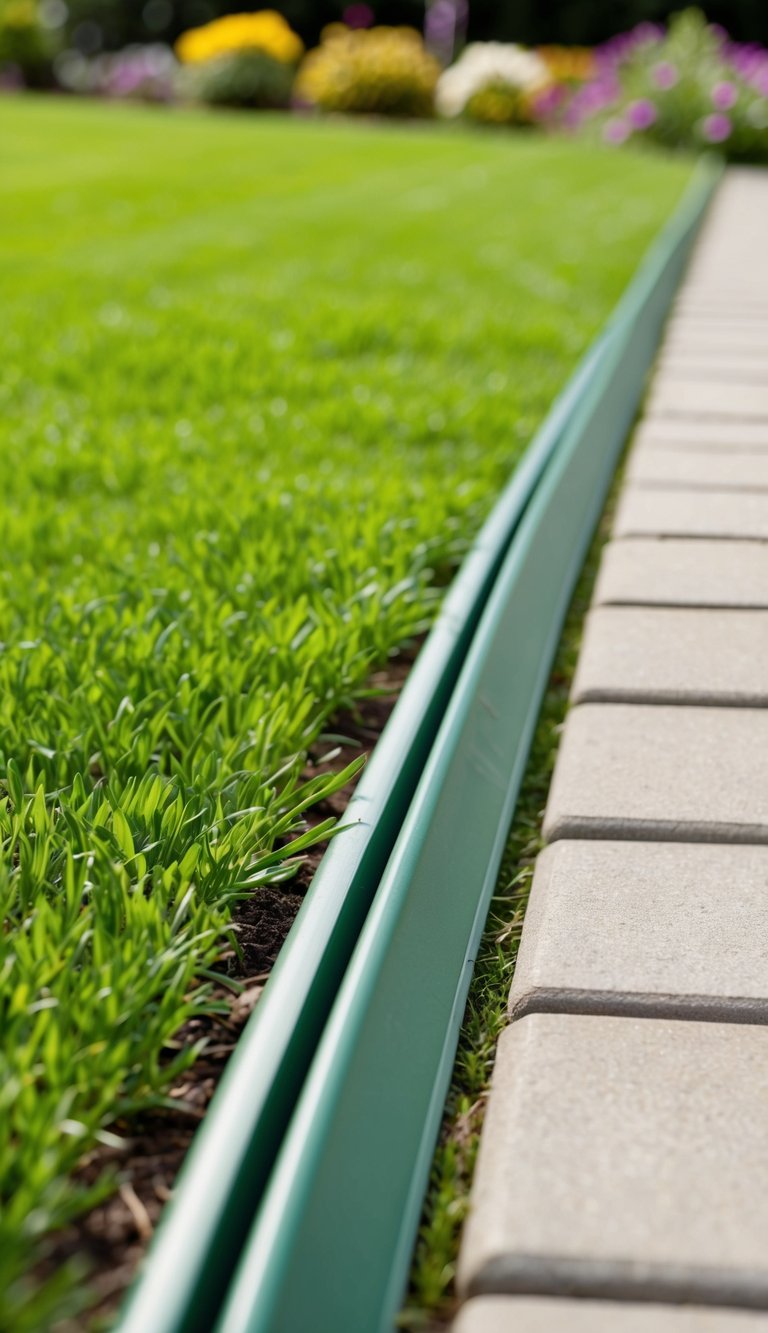
Plastic lawn edging is lightweight and easy to put in, even if you’re not a pro. No special tools needed.
It’s flexible, perfect for those wavy garden shapes, and it won’t rot like wood.
Plastic edging comes in lots of colors and styles, so it’s not hard to find something that fits your garden. You’ll spot it at places like The Home Depot.
6) Wooden Eucalyptus Wood Fence
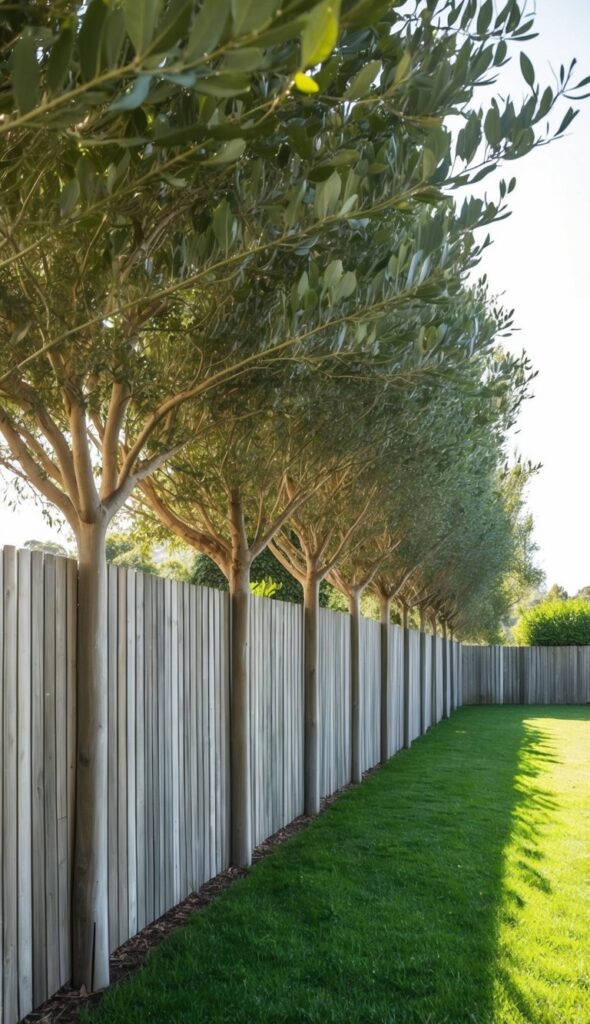
Eucalyptus wood fences add a natural touch to lawn borders. They stand up well to outdoor elements.
These fences usually come as solid logs joined by heavy wire. You can curve or straighten them to match your garden’s shape.
Eucalyptus works best in warm climates and keeps things looking clean and simple. More details are on the Backyard X-Scapes eucalyptus wood fence.
7) Log Edging Strips
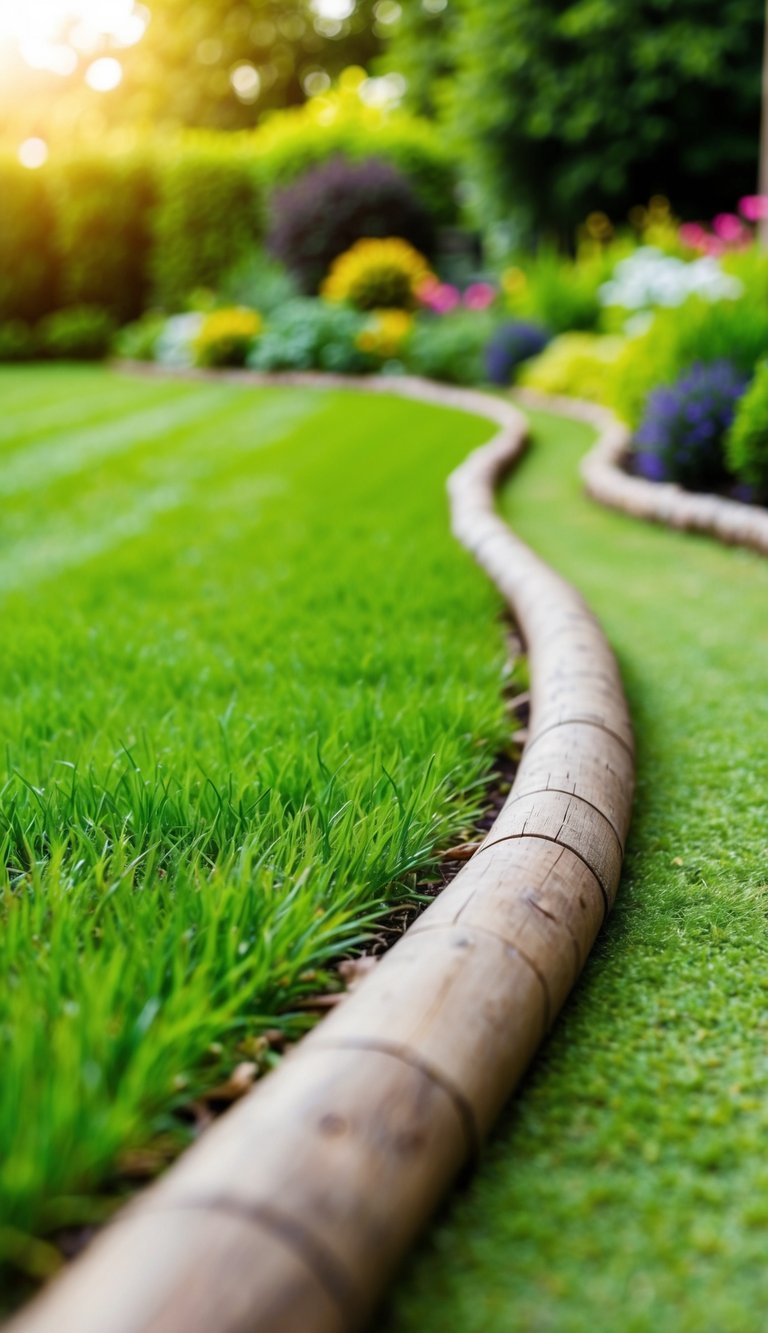
Log edging strips bring rustic charm to your yard. They’re usually made from short logs or rounds, lined up side by side.
This edging keeps mulch and soil in place and blends easily with plants.
8) Steel Edging
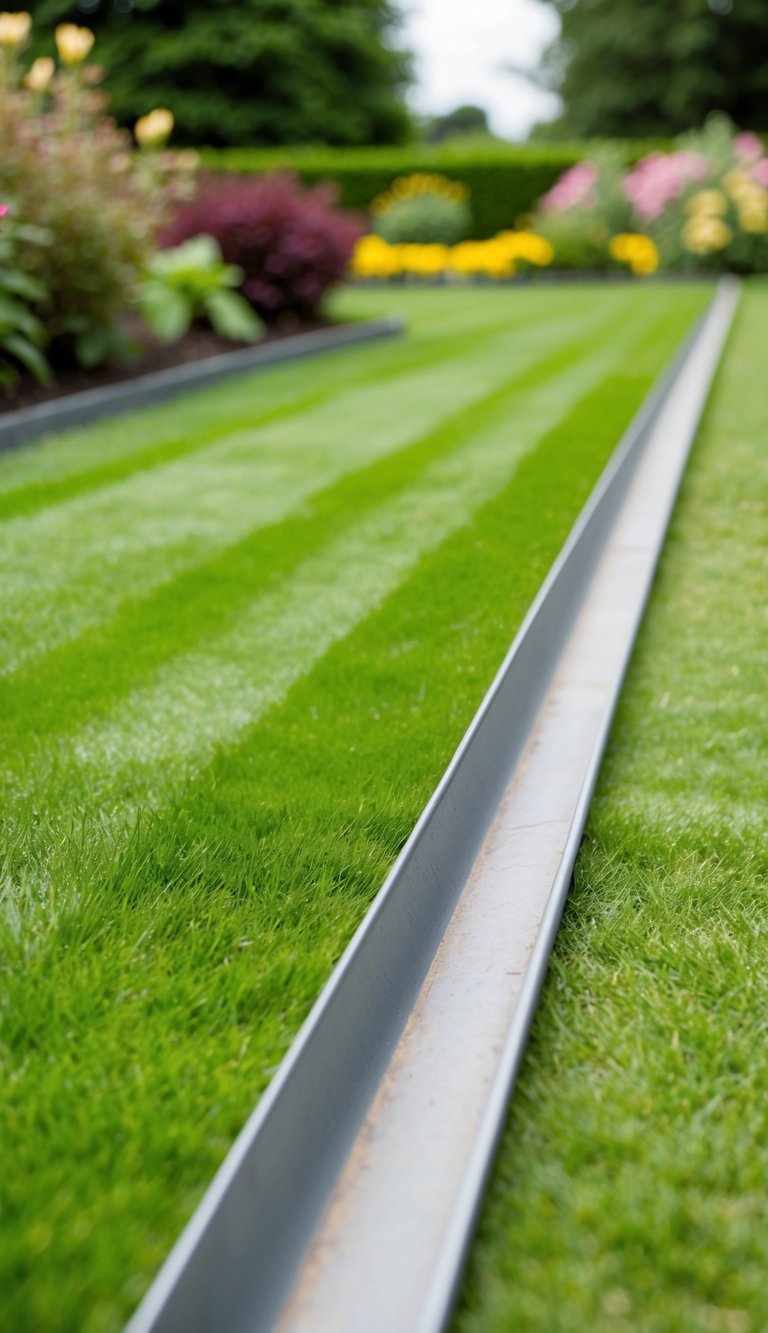
Steel edging is sleek and modern, and it’s built to last. It shrugs off weather and lawn tools.
You can bend it for curves, or keep it straight. COR-TEN steel is a favorite since it weathers nicely without losing strength. More info is out there if you want to compare steel edging options.
9) Shrubs or Plants as Borders
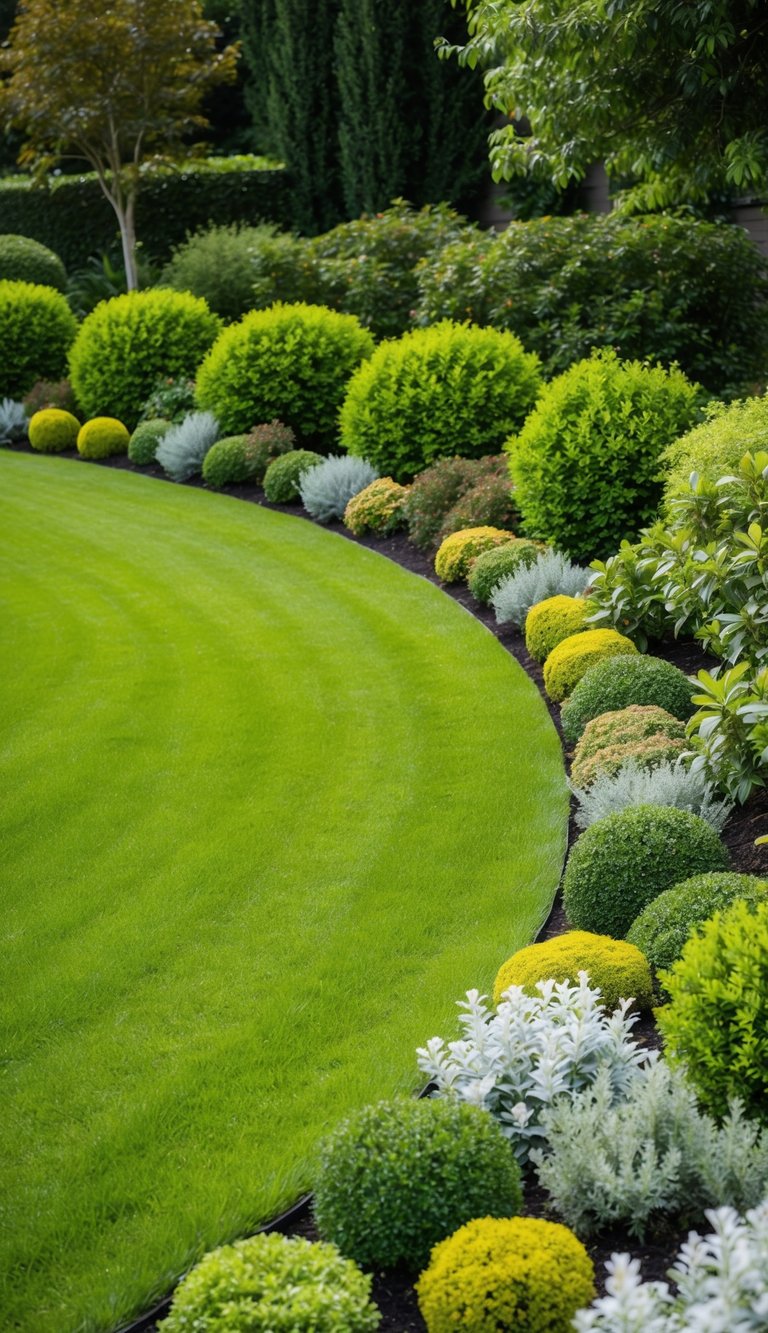
Shrubs and plants make for soft, living borders. They add color, texture, and sometimes even fragrance.
Boxwood, hydrangeas, and azaleas are popular, but small plants like alyssum work too. It’s a friendly, inviting way to edge a lawn. For ideas, see 29 best edging plants for flower beds and walkway borders.
10) Concrete Blocks
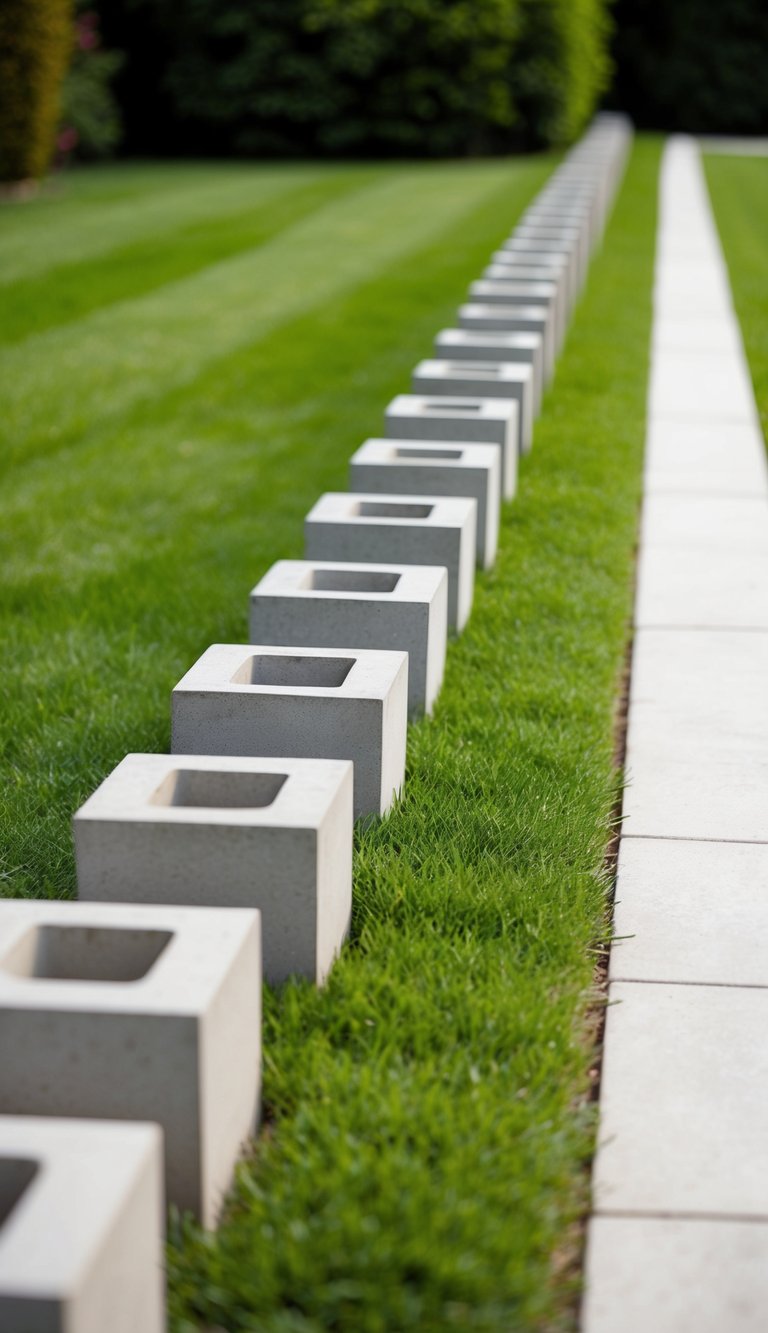
Concrete blocks are sturdy and budget-friendly. Stack or arrange them to make neat borders.
They’re handy for separating different garden areas, and you can use them for raised beds or just as edging.
For more ideas, see 34 YARDEN cinder block border ideas.
Planning Your Lawn Borders
A well-planned lawn border can really pull a garden together. It’s worth pausing to think about space and materials before you get started.
Evaluating Garden Layout and Size
First, take a good look at your garden’s shape and size. Smaller spaces usually work best with low-profile borders, while bigger yards can handle something taller or bolder.
Think about what’s already there—paths, beds, trees. Borders should separate spaces but not block off movement or crowd the plants.
Measuring the lawn helps you figure out how much material you’ll need. If your lawn curves, you’ll want flexible edging; straight edges call for something more rigid.
And don’t forget the style. Formal gardens lean toward straight, even borders, while informal ones can get away with curves and softer shapes.
Selecting Materials for Structure and Longevity
Pick materials that match your needs and the weather in your area. Metal, brick, wood, and plastic are all solid choices.
Metal lasts a long time but tends to cost more. Brick looks timeless and stands up to moisture.
Wood is easy to install but might rot unless it’s treated. Plastic is cheap and flexible, but not as tough.
Some folks prefer living borders—plants or shrubs—which need more care but look lush and green.
It’s smart to compare weather resistance, how easy it is to install, maintenance, and cost. You want something that’ll hold up and look good for years.
For more on edging materials, see landscape edging options at The Home Depot.
Design Principles for Lawn Borders

Lawn borders should blend in with the rest of your space and be practical. Choices about shape, material, and where you put them really affect the vibe of your garden.
Achieving Visual Harmony
Visual harmony is all about making sure your borders fit in with the garden’s style and colors. Picking materials that match or complement what’s already there helps a lot. Natural stone works for rustic settings, while metal or concrete feels right in a modern yard.
Curved borders add some movement and softness. Straight edges are for those who like things crisp and formal. Too many shapes or colors? That can make the yard feel cluttered.
Keeping the height and width consistent helps everything feel balanced. Borders that are too big or too small just look off, don’t they?
Balancing Functionality and Aesthetic Appeal
Borders split up lawns from flower beds, paths, or patios. They need to hold soil in place and stop grass from creeping where it shouldn’t.
If you want to keep grass roots contained and fight off soil erosion, sturdy materials like bricks or metal edging are a solid bet. They just last longer and do the job.
Some folks care about how easy it is to install or swap out borders. Removable edging lets you change your mind later, which is handy. Fixed borders, though, give you that locked-in, stable look for years.
When it comes to looks, it’s about finding something that lifts the garden up without stealing the show. Mulch or pebbles feel natural and won’t break the bank.
On the other hand, concrete pavers or corten metal can make things look sharp and a bit more polished. Maybe even a little fancy, if that’s your thing.
If you’re poking around for more ideas on border materials or styles, check out 10 inspirational ways to edge lawns.


